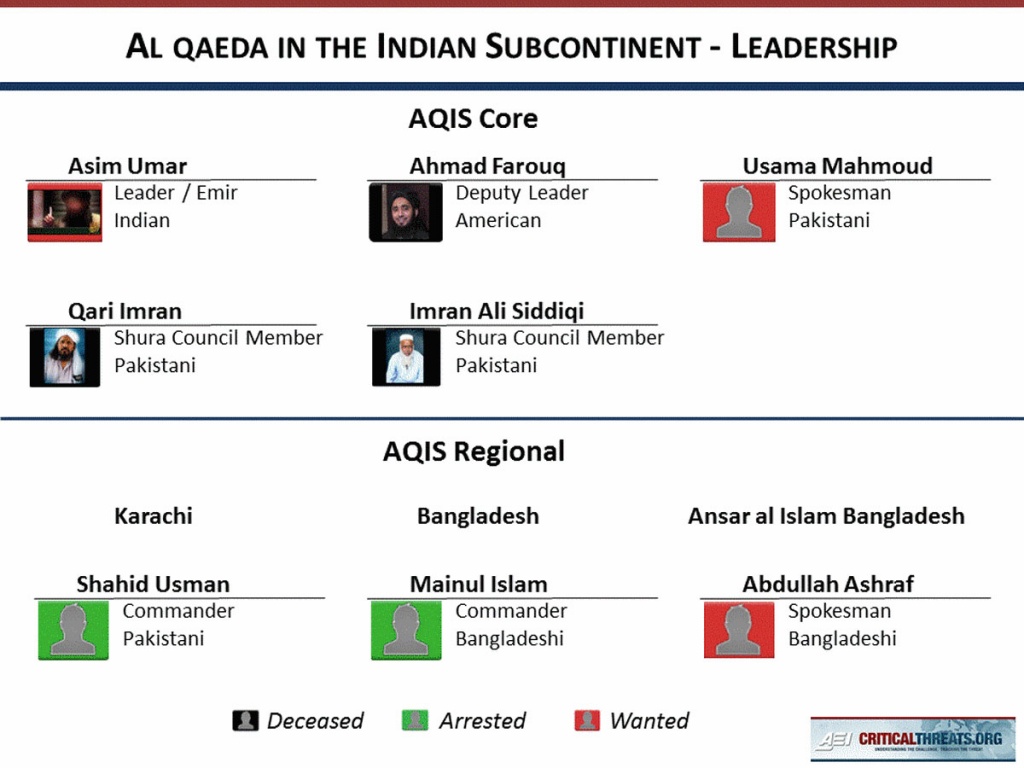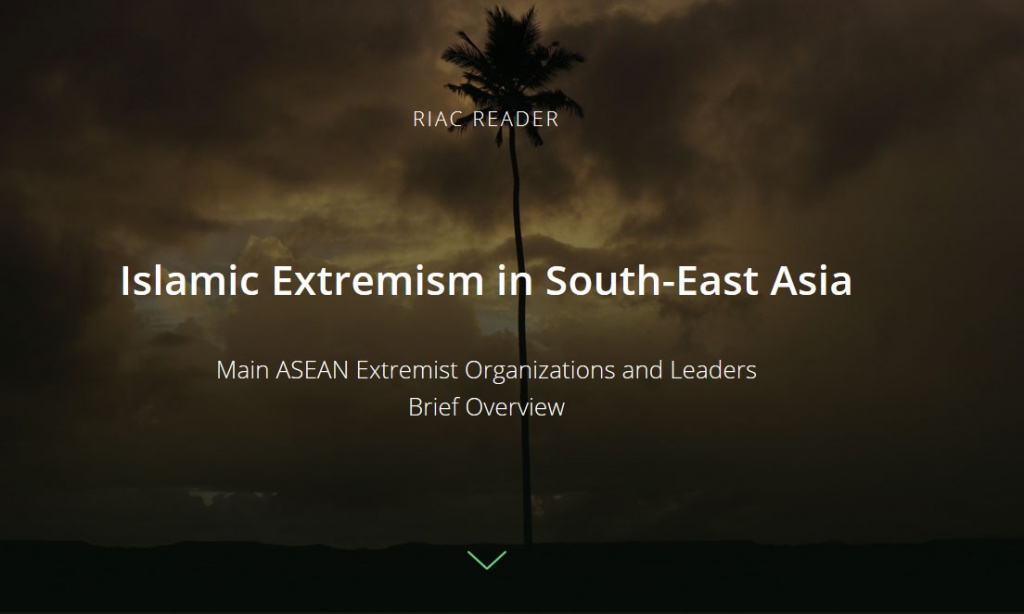Since its inception back in 2014, the terrorist group known as “al-Qaeda in the Indian Subcontinent,” or AQIS for short, has been attempting to generate a strong support base in India. However, it has so far not been able to manage a significant foothold amongst the Muslim population in the country. Initially, it successfully managed to recruit a handful of Muslim youths from India’s Northern and Eastern regions, but these attempts have been halted thanks to Indian security agencies’ successes in suppressing fledgling AQIS modules throughout the nation. It is widely agreed upon that the formation of al-Qaeda and the rise of its first generation leaders was facilitated by American and Pakistani agencies acting against the Soviet forces that were stationed in Afghanistan; therefore, the footprints of ISI are still visible in the modus operandi of al-Qaeda cells that continue to operate across the world, especially within the Indian subcontinent. AQIS, which is effectively the branch of al-Qaeda acting within subcontinent, is no exception to this fact and continues to work upon the basic design that was developed by ISI decades back to train Afghan Mujahedeen.
AQIS’ approach towards India is a rather conventional one, using conventional methods for recruitment, training, indoctrination and all of the other various aspects of a terrorist organization in pursuit of its insidious designs. However, AQIS has also tried to front itself as a tech-savvy group by its focus on its internet and social media presence.
India is also a vital source of supplies and logistical support for ISIS. According to a report published by Conflict Armament Research (CAR,) at least seven Indian companies were discovered to be instrumental to ISIS’s activities in logistical procurement.
AQIS uses the internet mainly to communicate with its cadres as well as to project its thoughts by issuing its reactions on various issues via internet and social media channels such as Telegram, Twitter etc. Still, AQIS has so far restrained from making use of internet technology for operational purposes such as training and the real time management of resources and man power through the internet or social media. Unlike a terrorist organization like Indian Mujahideen, AQIS has so far been unable or unwilling to use the internet as a way to directly generate terror.
Since its inception back in 2014, the terrorist group known as “al-Qaeda in the Indian Subcontinent,” or AQIS for short, has been attempting to generate a strong support base in India. However, it has so far not been able to manage a significant foothold amongst the Muslim population in the country. Initially, it successfully managed to recruit a handful of Muslim youths from India’s Northern and Eastern regions, but these attempts have been halted thanks to Indian security agencies’ successes in suppressing fledgling AQIS modules throughout the nation. It is widely agreed upon that the formation of al-Qaeda and the rise of its first generation leaders was facilitated by American and Pakistani agencies acting against the Soviet forces that were stationed in Afghanistan; therefore, the footprints of ISI are still visible in the modus operandi of al-Qaeda cells that continue to operate across the world, especially within the Indian subcontinent. AQIS, which is effectively the branch of al-Qaeda acting within subcontinent, is no exception to this fact and continues to work upon the basic design that was developed by ISI decades back to train Afghan Mujahedeen.
ISIS is a far newer force than al-Qaeda on the Indian Subcontinent, but already it has had a large number of recruits arrested, of its recruiters deported, and a shocking number of cells busted. This article compares the approaches of both AQIS and ISIS towards India.
AQIS’ approach towards India is a rather conventional one, using conventional methods for recruitment, training, indoctrination and all of the other various aspects of a terrorist organization in pursuit of its insidious designs. However, AQIS has also tried to front itself as a tech-savvy group by its focus on its internet and social media presence. Otherwise, the group continues to follow conventional methods to address its core requirements such as the identification of potential recruits and the training and indoctrination of its cadres. All members of the AQIS cell busted by Delhi police in December 2015 were recruited through human networks that were personally maintained by the AQIS leader Asim Umar, a native of the Sambhal district of the Indian State of Uttar Pradesh who has since retreated to Pakistan to participate in a so called Holy Jihad. Some members of another AQIS cell who were busted in 2015 in Hyderabad were also personally recruited by Human network of AQIS that is active in various parts of India.
Methods and Strategies
AQIS also shows traditional methods for radicalizing its members. In addition to various works of literature and other pamphlets that attempt to justify Jihad against non-believers, such as those written by AQIS leader Asim Umar, the organization also uses a 15 day training course to assist in the further indoctrination of its members and to create a religious orthodoxy within its Pakistani madarsas.
AQIS also shows traditional methods for radicalizing its members. In addition to various works of literature and other pamphlets that attempt to justify Jihad against non-believers, such as those written by AQIS leader Asim Umar, the organization also uses a 15 day training course to assist in the further indoctrination of its members and to create a religious orthodoxy within its Pakistani madarsas, institutions dedicated to the study of Islamic law, and where Indian recruits are taken to for further radicalization. However, AQIS leadership apparently finds it very expensive and risky to shift newly recruited members from India to PAKAF region, indicated by its attempts to set up a radicalization facility within Indian territories. To accomplish this, the organization has been trying to recruit low level religious preachers from various parts of India, specifically within Delhi, Hyderabad and the western territories.
As the main objective of AQIS is to sow chaos within India, its basic strategy essentially involves recruiting Indian Muslim youth, training them in facilities outside of their home country, and sending them back to India to execute terror plans. This is assisted by their use of the internet and social media in aspects such as communication between members and leadership as well as to help spread ideological propaganda. However, AQIS distinctly refrains from activities such as online recruitment and training.
In strong contrast to their older counterpart, ISIS has resorted to all sorts of unconventional methods to assist the expansion of its activities in India. ISIS is more than willing to use both online and offline techniques in all of its activities, including the recruitment and training of Indian Muslims, in procuring supplies, and in spreading its propaganda.
The arrests of Afsha Zabeen in Hyderabad, Abdullah Hadi and Abdul Rehman Al Enezi among other examples suggest that in order to improve its recruitment activities in India, ISIS has focused mainly on nonresident Indian nationals living in the gulf region as these individuals were easier to contact and recruit without the involvement of the Indian authorities.
India is also a vital source of supplies and logistical support for ISIS. According to a report published by Conflict Armament Research (CAR,) at least seven Indian companies were discovered to be instrumental to ISIS’s activities in logistical procurement.
The arrest of Mehndi Masroor Biswas, a technocrat associated with a US multinational in India, further highlights the focus ISIS has on India for its propaganda activities.
However, nations such as the USA, Russia and France have increased their military pressure againt ISIS, the terrorist organization has dramatically altered its strategies in India.
After the ISIS cell led by Muhammad Iliyas Yazdani in the south Indian city of Hyderabad was busted, authorities discovered that ISIS had begun influencing Indian youth to perform acts of terror on more local level, explaining why the number of Indian youths attempting to reach Iraq and Syria had gone down significantly from before. However, ISIS’s reach over the youths of India continues to expand.
AQIS continues to use traditional methods for identifying and approaching possible Indian recruits through its human networks, utilizing ‘man to man’ approaches to radicalize and motivate youths to join their frontlines. In contrast, ISIS depends almost entirely on social media to identify, select, recruit and train Indian Muslim youth.
AQIS uses the internet mainly to communicate with its cadres as well as to project its thoughts by issuing its reactions on various issues via internet and social media channels such as Telegram, Twitter etc. Still, AQIS has so far restrained from making use of internet technology for operational purposes such as training and the real time management of resources and man power through the internet or social media. Unlike a terrorist organization like Indian Mujahideen, AQIS has so far been unable or unwilling to use the internet as a way to directly generate terror. Therefore, it is clear that AQIS has strict guidelines for the use of internet technology and social media platforms for its members in India.
In regards to internet usage, ISIS is slightly different from AQIS. The organization has not only been successful in making optimum use of internet technology on various platforms but evidence shows that ISIS has been using internet technology to train recruits and in its attempts to coordinate lone wolf attacks.






